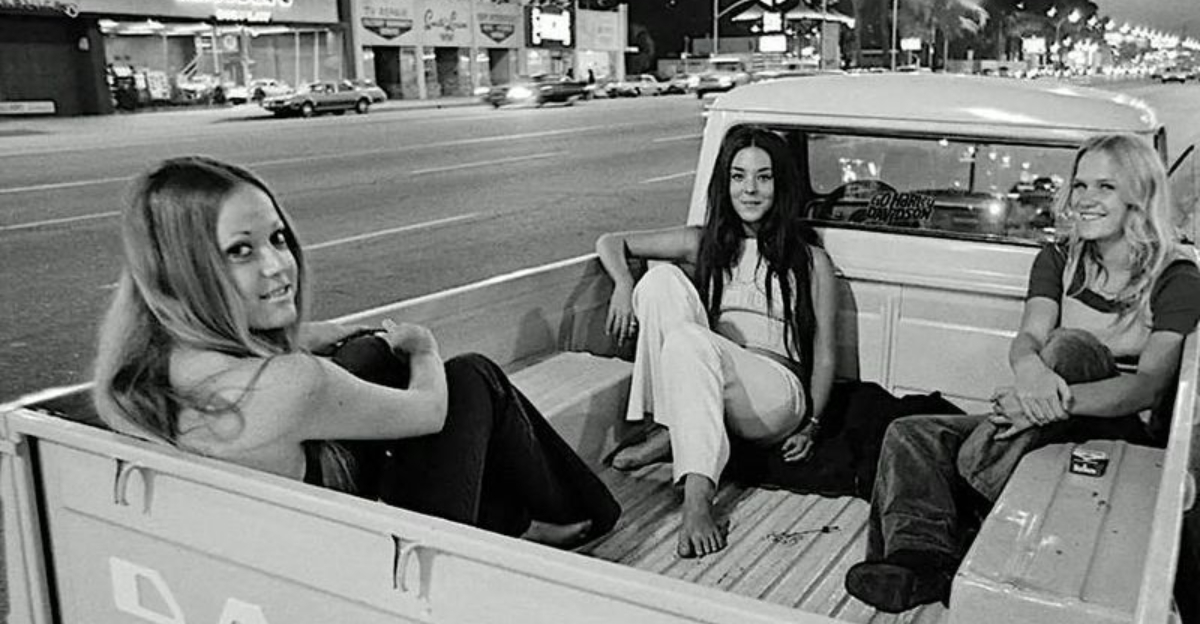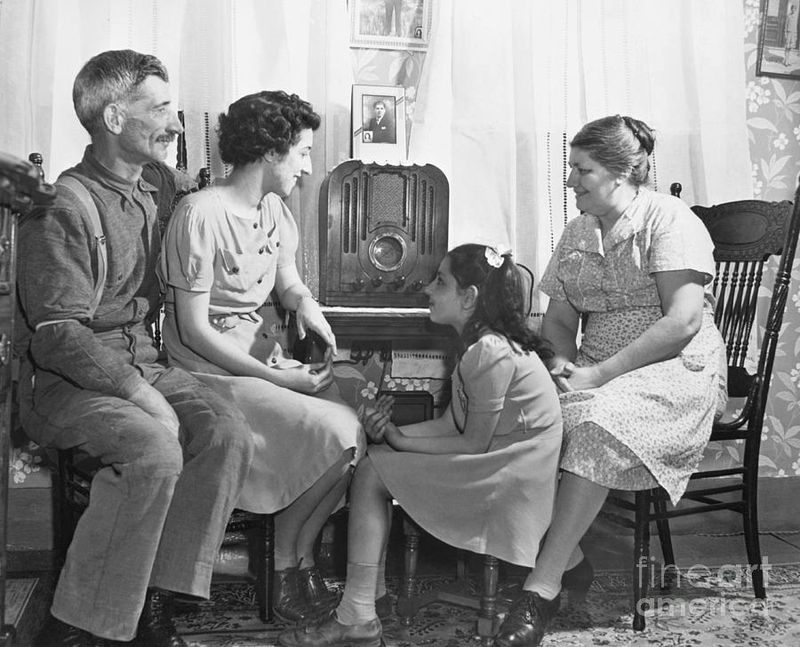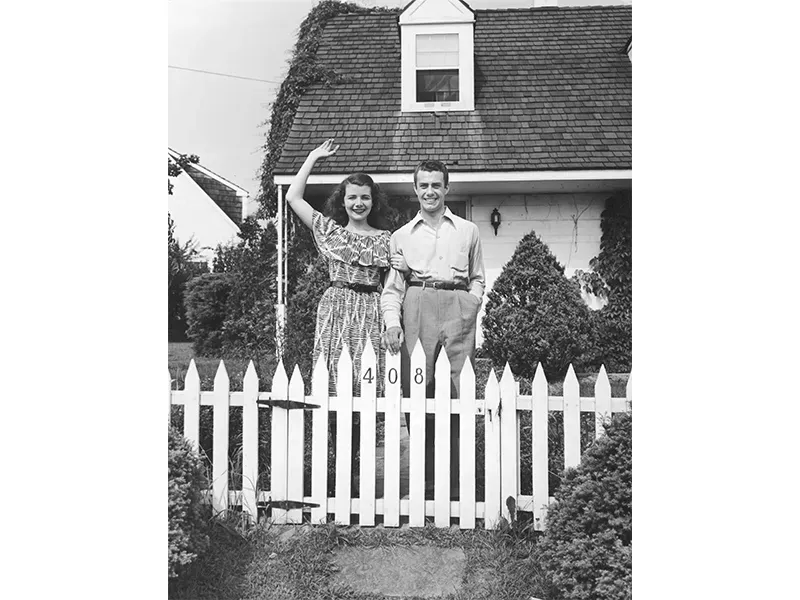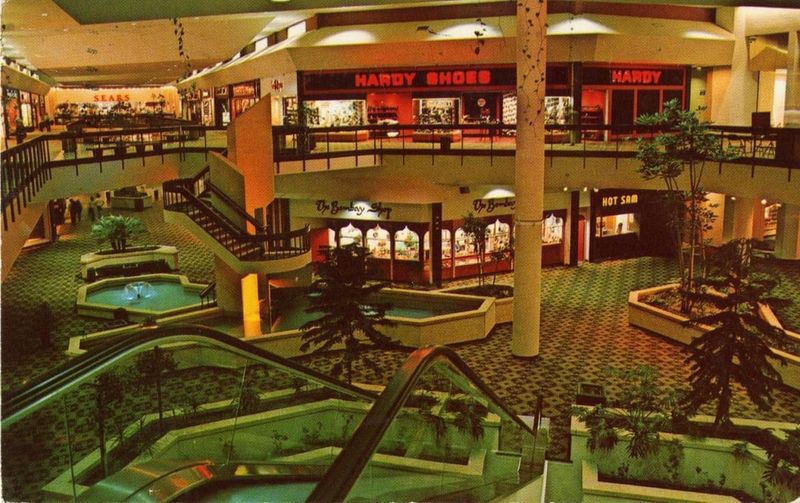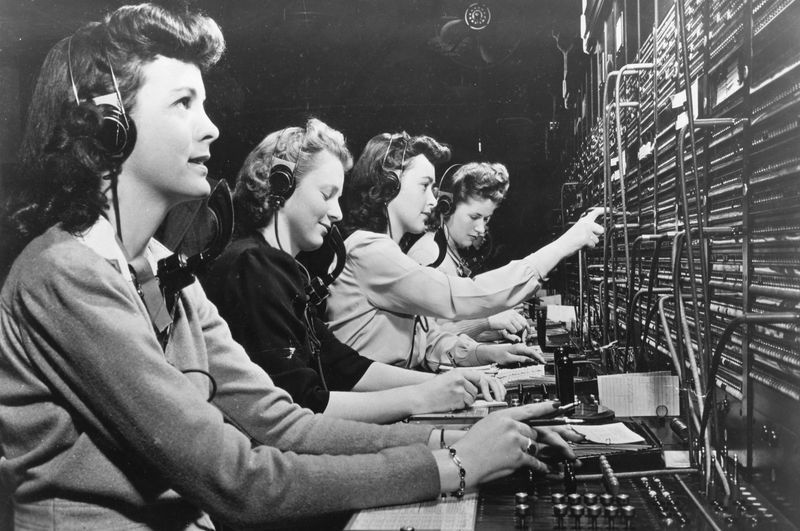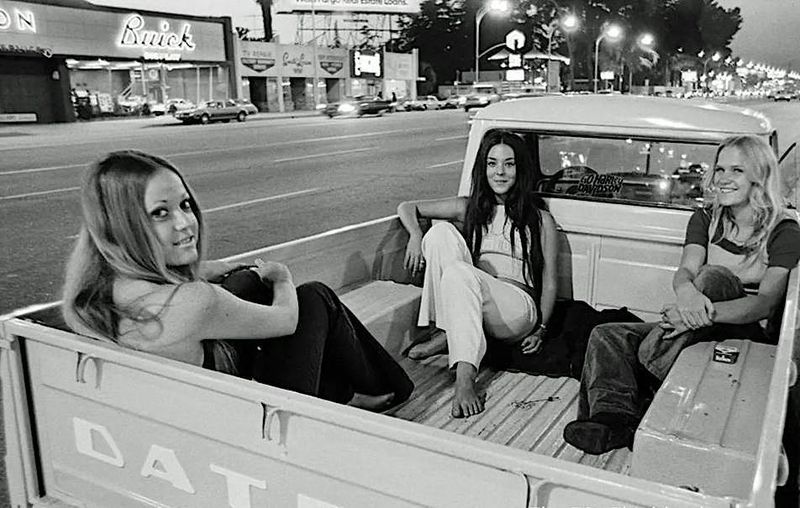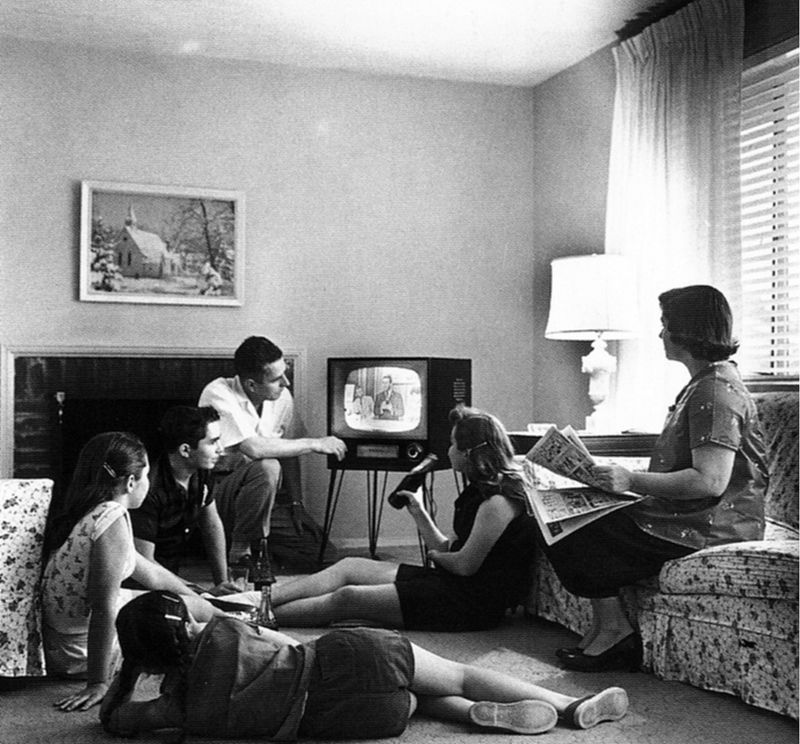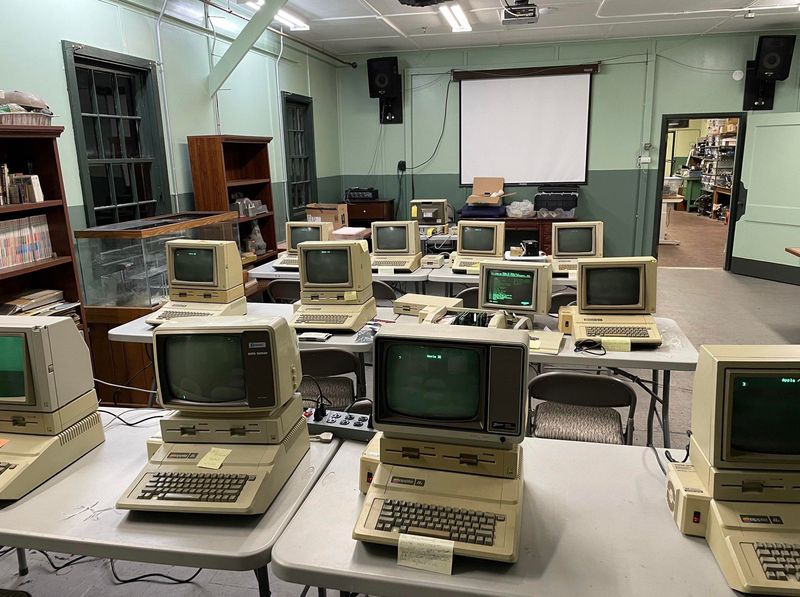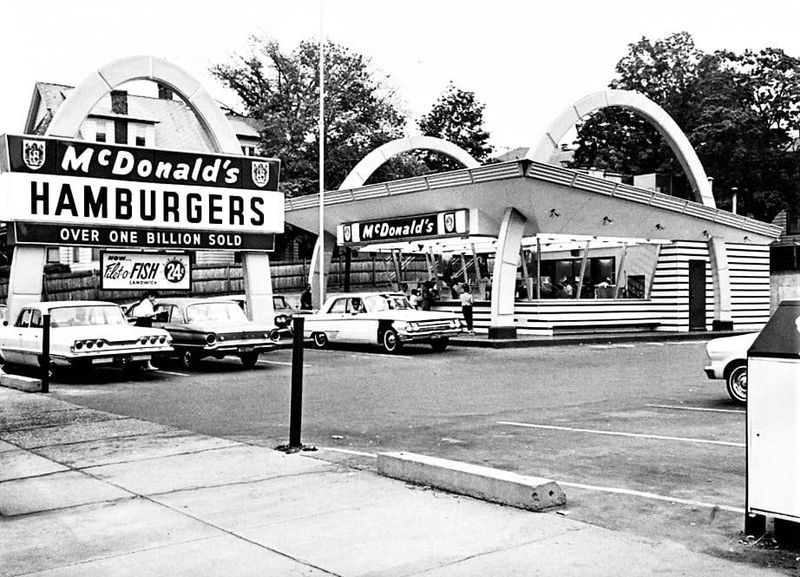Small-town America underwent remarkable changes from the post-war 1940s to the neon-bright 1980s. Technology, transportation, and social values transformed daily life in ways our grandparents could hardly have imagined.
These four decades saw rural and small-town communities shift from radio gatherings to personal Walkmans, from general stores to shopping malls, and from traditional family structures to more diverse living arrangements.
1. Family Gatherings Around the Radio Dial
In 1940s small towns, the radio wasn’t just entertainment—it was the family’s window to the world. Evenings meant gathering in the living room as families huddled around wooden console radios, listening to news about the war or programs like “The Shadow” and “Fibber McGee and Molly.”
Children sprawled on floors while parents claimed the best chairs, sharing this communal experience in an era before television claimed the throne. Radio dramas sparked imagination in ways screens never could, creating shared cultural moments across small-town America.
2. The Suburban Dream Takes Root
White picket fences sprouted across small-town landscapes during the 1950s as the suburban dream infiltrated American consciousness. Returning veterans with GI Bill benefits built cookie-cutter homes on town outskirts, creating new neighborhoods where traditional gender roles flourished.
Dad worked while Mom maintained spotless homes equipped with newfangled electric appliances. Children rode bicycles freely through safe streets, returning only when streetlights flickered on. This era cemented the nuclear family ideal that would dominate American culture for decades.
3. Main Street’s Battle Against Shopping Malls
“Save Our Downtown!” The battle cry echoed through small towns as shopping malls threatened Main Street businesses by the 1970s. Family-owned hardware stores and five-and-dimes that had served communities for generations suddenly competed with climate-controlled shopping centers offering everything under one roof.
Weekend family trips to these retail wonderlands became social events. Teenagers claimed mall corridors as hangout spots while parents appreciated convenient parking. Meanwhile, downtown storefronts emptied one by one, fundamentally altering small-town economic landscapes and community gathering spaces.
4. From Party Lines to Private Conversations
“Lower your voice, Mrs. Johnson might be listening!” In 1940s small towns, telephone party lines meant sharing service with neighbors who could eavesdrop on every call. Privacy was a luxury few enjoyed in telecommunications.
By the 1960s, private lines became standard, transforming how small-town residents communicated. Teenagers could finally discuss crushes without the whole neighborhood knowing! The rotary dial gave way to push-button technology in the 1970s, while the 1980s introduced answering machines that forever changed the social obligation of catching calls.
5. Cruising Culture Hits Small-Town Streets
Saturday nights in 1950s and 60s small towns belonged to teenagers with access to automobiles. Main Streets transformed into unofficial parade routes as high schoolers “cruised” in polished cars, showing off chrome details while seeking social connection.
Local diners and drive-ins served as anchors for this ritual, their neon signs beckoning young drivers to stop for burgers and milkshakes. Parents worried about this newfound mobility, but cruising became a cultural touchstone that defined generations of small-town youth, creating memories of freedom and possibility before adulthood responsibilities took hold.
6. When Television Changed Everything
Remember when the first television arrived in town? In small communities of the early 1950s, the family with the first TV suddenly found their living room packed with neighbors during popular broadcasts. These grainy black-and-white images revolutionized entertainment, information sharing, and even furniture arrangement.
By the 1970s, color televisions dominated living rooms, while the 1980s brought cable channels that shattered the shared viewing experience. Small-town conversations once centered around last night’s single broadcast slowly dissolved as viewing options multiplied, fragmenting once-uniform cultural touchpoints into increasingly personalized entertainment.
7. From School Houses to Computer Labs
The one-room schoolhouse hadn’t completely vanished from rural America in the 1940s. Students of different ages learned together under a single teacher’s guidance, using chalkboards and paper textbooks in a system largely unchanged for generations.
Fast-forward to 1980s small towns, where consolidated schools featured dedicated computer labs with Apple IIe machines. Wide-eyed students learned BASIC programming and played Oregon Trail during special periods. This technological revolution fundamentally altered how small-town children learned, creating digital natives in communities where their grandparents had used fountain pens and slide rules.
8. Music Goes Personal with Walkmans
Small-town teenagers of earlier decades gathered around jukeboxes or shared record players, making music inherently social. The 1980s Walkman revolution changed everything by privatizing the soundtrack of young lives through personal headphones.
Suddenly, walking down Main Street meant encountering teens in their own musical bubbles, cassette collections showcasing individual taste rather than community consensus. Parents lamented this isolation while teens embraced newfound audio freedom. This shift mirrored broader cultural changes as small towns increasingly valued personal choice over communal experience—a technological symbol of America’s individualistic turn.
9. Fashion Statements Through Four Decades
Small towns weren’t fashion backwaters—they reflected each decade’s distinctive style. The 1940s featured practical clothing with wartime influences: victory rolls, modest dresses for women, and formal hats for men even in rural communities.
By the 1960s, youth rebellion brought longer hair and shorter skirts, though small towns typically embraced trends more conservatively than cities. The 1970s saw even rural teens sporting bell-bottoms and earthy tones. When the 1980s arrived, neon colors and big hair infiltrated high school hallways nationwide, proving that MTV’s influence reached even the most remote communities.
10. The Rise of Fast Food Culture
Small-town dining underwent a revolution when golden arches and other fast-food chains arrived in the 1960s and 70s. Local diners and cafes that had served communities for generations suddenly competed with standardized, quick-service restaurants offering identical experiences nationwide.
Opening day for the first McDonald’s often became a community event! By the 1980s, these establishments had transformed from novelties to fixtures. Drive-thru windows changed mealtime rhythms, while teenagers found first jobs flipping burgers. This shift symbolized America’s growing preference for convenience and consistency over tradition and local flavor.
